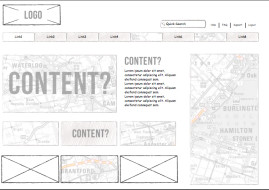Web Design 101: Building the Right Site for Your Business
You want to build the best damn site out there for your clients. But they’re stalling and can’t commit to the design brief. What’s the problem?
Or you have a client who is new to web development. They are either unaware of or overwhelmed by the design process in general. They have endless questions and you try to explain the process to them but they only become more confused. Content strategy? Web hosting? Java-what?
There are many resources out there to help you distill the essentials so that your client is educated and can make an informed (and hopefully) speedy decision. But how to make sense of it all for yourself and your client? How much hand-holding is too much or not enough?
I was faced with this exact dilemma recently so I did some research. Here’s what I found out:
Building the right site for your client necessarily requires that you understand your client’s business. Beyond figuring out how the company logo will respond in different viewports or choosing the right content management system (CMS), you have to roll up your sleeves and dig deep to understand how your brilliant web site is going to be the answer to your client’s business problems.
I know what you’re thinking: Ye gads! How the heck am I going to do that? I’m just starting out. Sure, I’m a code guru and internet genius. But I know nothing about wobble wrenches and water cooling systems. The short answer is that you don’t have to. You just have to know how to get that information from your client. Through multiple meetings and conversations about who the web site is really for, you will help each other discover why the web site is needed. This may mean spending more time researching their competitors, having more in-person meetings or showing them how SEO works. But the more time you spend with them, the more information you are going to get. You will move beyond simply talking about a web site to talking about a business solution that happens to be online.
Here are some resources to help you explain the web design process to your client in a non-threatening, low-tech but thorough manner AND solicit the right information that will help you build a site that speaks to his/her bottom line. The main ingredient is education so that you and your client are speaking the same language.
As Brennan Dunn said, “Your product or service should be the bridge that links the problem with a solution.” How? It starts with education. I believe that the more you know about what it is your client’s business needs, the better your designs are going to be. And, the extra value you bring to the relationship will set you apart from other designers. If this is a client who is serious about finding solutions to their business, they will appreciate this process and look to you to help them.
Where Should I Start?
• Think of yourself as a solution provider, not just a freelance designer.
• Create and send your client a web design questionnaire (examples below)
• Based on client answers, create a proposal that addresses the core business issues
• Build value into your proposals by seeing yourself as a partner and not a vendor
Sample Web Design Questions
10 Questions You Need to Ask Your Web Design Client
Ultimate List Of Web Design Checklists: Get Work Done!
How to Extract the Facts with a Web Design Client Questionnaire
72 Questions to Ask New Web Design Clients with PDF Chart
Creative Latitude Client questionnaire – tons of forms
Web Design Questionnaires, Project Sheets and Work Sheets
Sample Proposals and Contracts
Useful Web Design Proposal Resources, Tools and Apps
AIGA Standard Agreement for Design Services
How to Write a Web Design Proposal
Other Resources
Understanding the Value of Design
Getting into Their Business
One of the most comprehensive and well-written article on this subject is by Dr. Ralph F. Wilson, one of the pioneers of Internet marketing and e-business. The article is long but a relatively easy read chock full of common sense goodness and resources.
“There are twelve critical places in building a website where you must make the right decision, or you’ll have to repeat this task again and again until you get it right.” —Dr. Ralph F. Wilson
12 Website Design Decisions Your Business or Organization Will Need to Make
http://webmarketingtoday.com/articles/12design/
1. Determine Your Website’s Chief Purpose
2. Decide Whether to Outsource or Do It Yourself
3. Divide Your Website into Logical Sections
4. Develop a Site Navigation System
5. Give Your Website an Attractive ‘Look and Feel’
6. Build Basic Webpage Templates
7. Construct Your Site to Be Search Engine Friendly
8. Write and Fine-tune Focused Content Pages
9. Incorporate Customer Communication Systems
10. Create and Test Effective Sales Pages
11. Conduct Usability Trials and Incorporate Changes
12. Plan to Maintain Your Site for the Long Haul
Another well-written article that outlines the development process is written by web designer and front-end developer, Selene M. Bowlby of iDesignstudios.com. In plain language, Ms. Bowlby maps out the crux of the design process for both designer and client. If you can summarize and explain this process to your client, your communications and the rate at which you and your client move to the next phase will improve. If it doesn’t, you may have to rethink how you qualify new clients.
6 Phases of the Web Site Design and Development Process
If this has helped you in your business or you’ve found other ways to improve client relations, I’m still learning so I’d love to hear about it.





















